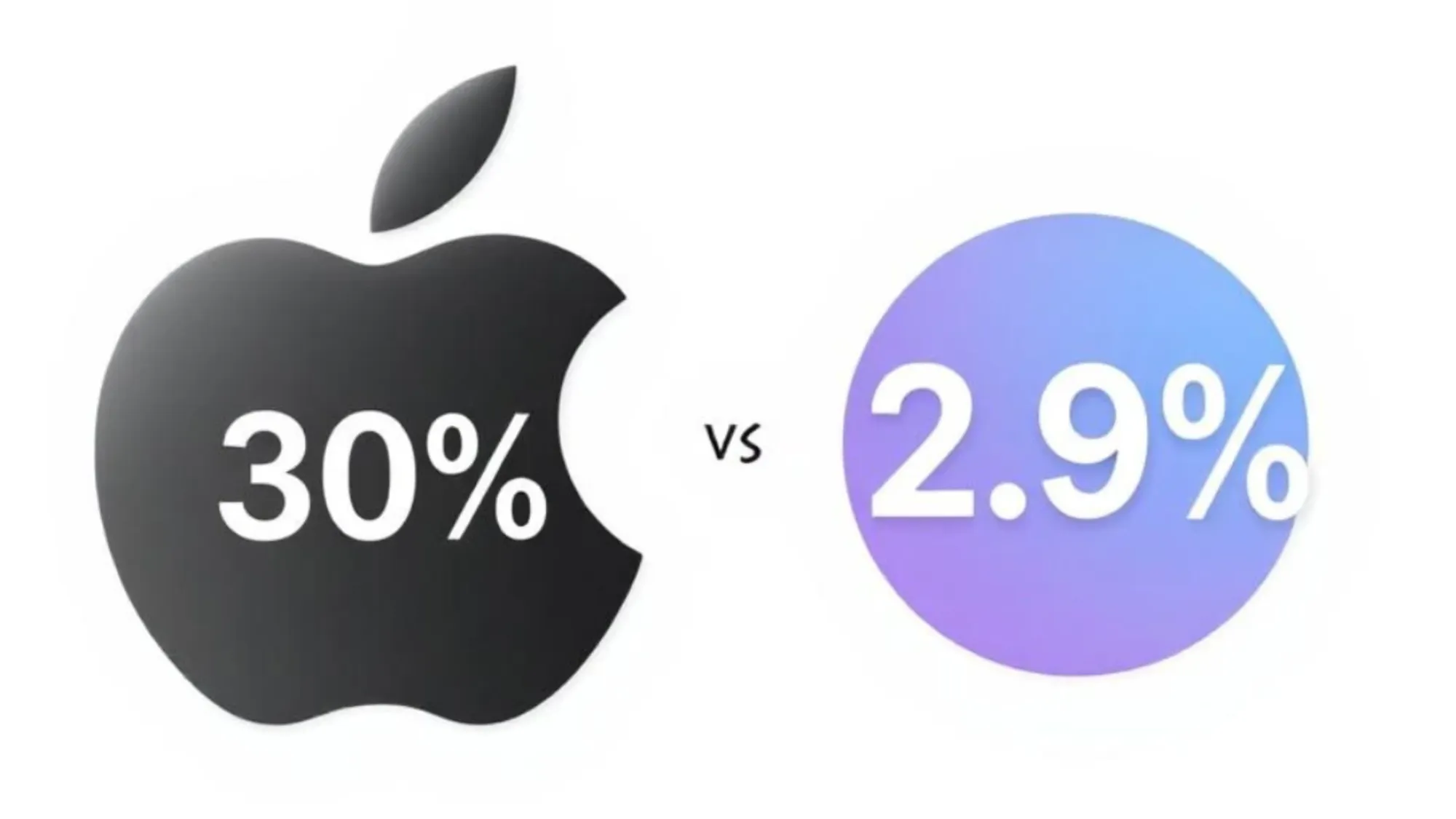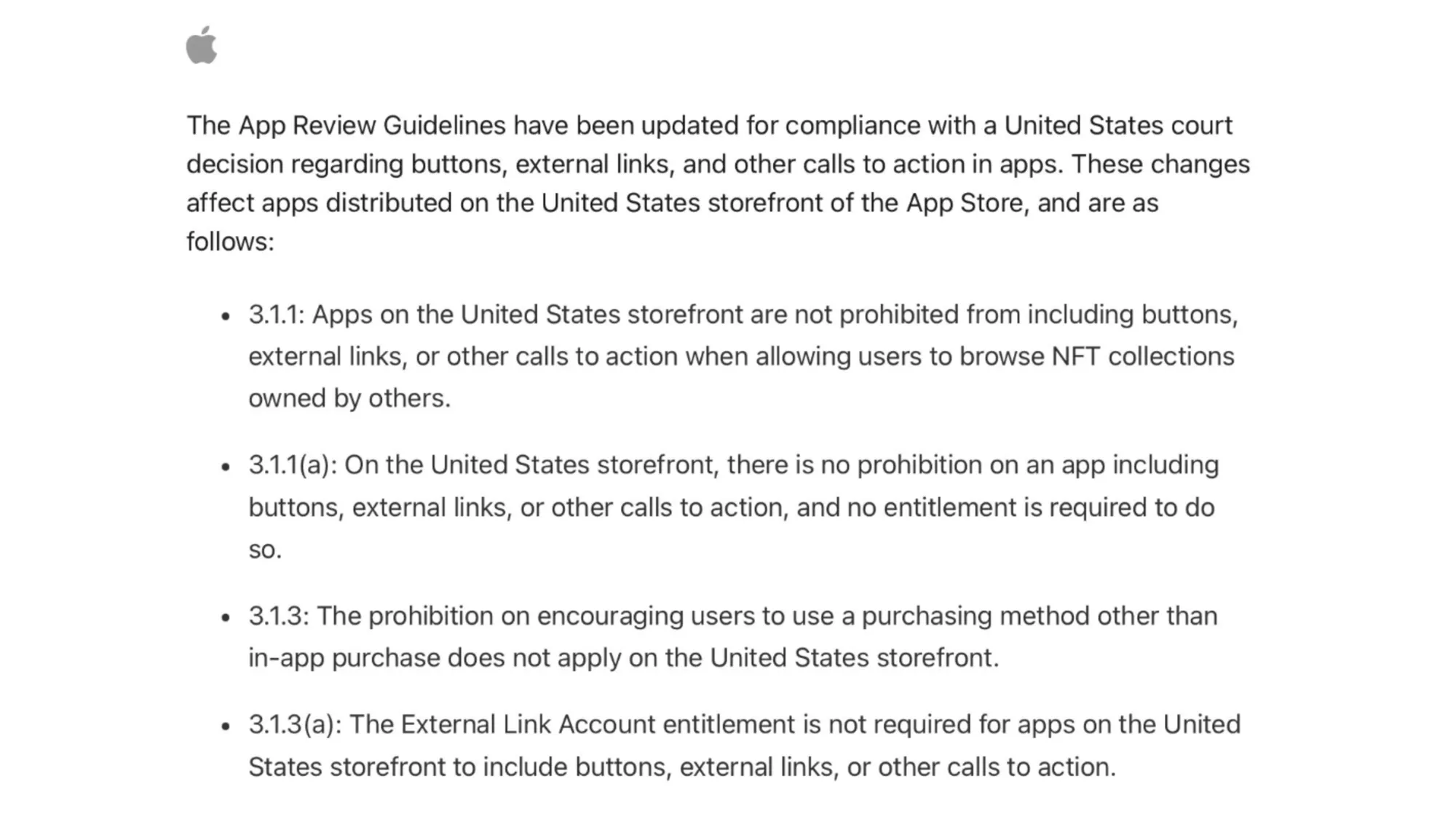Stripe helps iOS developers bypass Apple's 30% commission after court ruling
Apple forced to remove payment restrictions after judge finds tech giant in contempt.

Three days after a landmark legal decision found Apple in contempt for violating anti-steering provisions, payment processor Stripe has released detailed implementation guides showing iOS developers how to completely bypass Apple's 30% commission. The practical impact of this ruling fundamentally transforms the economics of iOS app development, potentially shifting billions in revenue from Apple back to developers.
Get the PPC Land newsletter ✉️ for more like this
On April 30, 2025, US District Judge Yvonne Gonzalez Rogers issued an immediate injunction prohibiting Apple from charging any commission on purchases made outside iOS apps. The court found Apple deliberately violated previous injunctions by implementing restrictive external payment policies designed to maintain its revenue stream rather than comply with anti-steering provisions.

The court order took immediate effect, with Judge Gonzalez Rogers emphasizing "time is of the essence" and refusing to entertain any stay requests. Apple responded swiftly, updating its App Store guidelines just 24 hours after the contempt ruling. According to the May 1st update, Apple eliminated restrictions on external payment options for US developers, completely removing sections that previously required entitlements and commissions for external purchases.
Stripe wasted no time capitalizing on this development. On May 1st, Stripe product manager Michael Luo announced on social platform X: "Big news iOS app developers! You can now accept payments with @stripe outside of your app, with no iOS app store commissions." His post, which has garnered over 5.3K reposts and 1.1 million views, linked to comprehensive implementation documentation.
The financial implications for developers are substantial. While Apple previously charged up to 30% commission, Stripe's standard payment processing fee is 2.9% plus $0.30 per transaction – a reduction of approximately 90% in payment processing costs.
Court findings reveal Apple's deliberate obstruction
Internal documents revealed through legal proceedings showed Apple executives chose the "most anticompetitive option" when designing their compliance program following the original 2021 injunction. The court determined Apple's 27% commission on off-app purchases, coupled with restrictive design requirements and high-friction user experiences, effectively prevented viable alternatives to Apple's In-App Purchase system.
Communications unveiled during February 2025 hearings showed Apple employees designing what they called a "scare screen" to deter users from completing external purchases. One employee wrote that "'external website' sounds scary, so execs will love it" when developing warning text for users attempting to make purchases outside the app.
The contempt ruling is unusually forceful, even referring the matter to the US Attorney for the Northern District of California for potential criminal contempt proceedings against Apple. The court specifically named Vice President of Finance Alex Roman, who allegedly lied under oath during testimony about Apple's analysis of costs developers would face when using alternative payment options.
Immediate industry response
The tech industry responded rapidly to this seismic shift. Epic Games CEO Tim Sweeney had announced on social media that Epic would return Fortnite to the iOS App Store after more than four years of absence, offering a "peace proposal" if Apple extended the court's "friction-free, Apple-tax-free framework worldwide."
Spotify also moved quickly, announcing on May 2 that it had already submitted an app update allowing US customers to see subscription pricing details, click links to purchase outside the app, seamlessly change subscriptions, use payment options beyond Apple's system, and access other buying opportunities that will directly benefit creators.
Sarah Perez, Consumer News Editor at TechCrunch, noted: "Apple's loss in court is immediately opening up a whole new world for app developers. Entire business models were impossible under the old 30% regime."
New implementation options for developers
Stripe's documentation now offers developers three distinct approaches for processing iOS digital goods payments:
- Using Stripe Checkout to redirect customers to a Stripe-hosted payment page
- Creating Payment Links for in-app digital goods or subscriptions
- Using Stripe Elements to create custom payment forms on external websites
Wayne Yap, a tech commentator, highlighted that "Stripe made integrating painless too: Plug-and-play SDK, accepts 135+ currencies, supports cards, Apple Pay, Google Pay, Alipay, built-in PCI, fraud protection, even no-code friendly with FlutterFlow."
However, implementing external payment systems presents new operational challenges. Developers must now decide whether to maintain Apple's in-app purchasing system alongside their own payment options, creating a dual-track approach that may require extensive A/B testing and user experience research.
Impact on marketing strategies
For the marketing community, this ruling represents a fundamental shift in mobile user acquisition and monetization strategies. Companies that previously factored Apple's 30% commission into their customer acquisition costs may now find iOS users significantly more profitable. This could lead to increased advertising spending on iOS platforms and reimagined app monetization approaches.
The elimination of the "Apple tax" on external purchases enables subscription businesses and transaction-based apps to operate more viably on iOS. Previously, many developers had to inflate their iOS prices by 30% to offset Apple's commission, creating price disparities between platforms. Now, developers can offer consistent pricing, potentially passing savings to consumers or reinvesting in content development.
Mobile marketers will need to rapidly adapt their user acquisition strategies and lifetime value calculations. The removal of Apple's commission on external purchases effectively reduces customer acquisition cost thresholds, making previously unprofitable user segments potentially valuable. This may drive innovation in mobile business models and marketing approaches previously constrained by commission structures.
The ruling could also impact App Store Optimization (ASO) strategies. As developers gain more freedom in monetization methods, emphasis may shift from optimizing for in-app purchase conversion to driving external conversions, requiring new measurement frameworks and marketing tactics.
Broader implications for digital marketplaces
Industry experts suggest this ruling could spark similar challenges to other digital marketplaces that charge comparable commission rates, including console gaming platforms. However, those marketplaces may benefit from different competitive landscapes and legal considerations, including the fact that console manufacturers often sell hardware at a loss and recoup investments through software sales.
Throughout the proceedings, Apple maintained that its App Store policies were necessary to ensure security, privacy, and a seamless user experience. However, the court found these justifications pretextual, noting that Apple permits developers selling physical goods to include direct payment links without the same restrictions.
This landmark ruling redefines the boundaries of platform economics in the digital age and could usher in a new era of competition in the mobile app marketplace. While developers celebrate the financial benefits, consumers may experience both advantages and disadvantages – potentially lower prices, but also less centralized subscription management and potential security concerns with fragmented payment systems.
Timeline
- August 13, 2020: Epic implements direct payment in Fortnite, leading to the game's removal from the App Store
- August 14, 2020: Epic files lawsuit against Apple
- September 10, 2021: Judge Gonzalez Rogers issues initial ruling and injunction against Apple's anti-steering provisions
- December 8, 2021: Ninth Circuit grants stay of injunction pending appeal
- April 24, 2023: Ninth Circuit affirms district court ruling on UCL violations and injunction
- January 16, 2024: Supreme Court declines review of case
- January 17, 2024: Ninth Circuit mandate issues, injunction takes effect
- January 16, 2024: Apple announces compliance plan including 27% commission on external purchases
- March 13, 2024: Epic files motion to enforce injunction and hold Apple in contempt
- May 8-31, 2024: Court holds first evidentiary hearing
- February 24-26, 2025: Court holds second evidentiary hearing
- April 30, 2025: Court finds Apple in civil contempt, issues immediate injunction prohibiting commissions on external purchases
- May 1, 2025: Apple updates App Store guidelines to comply with court ruling
- May 1, 2025: Stripe releases implementation guides for commission-free iOS payments
- May 2, 2025: Spotify announces app update using new external purchase capabilities


